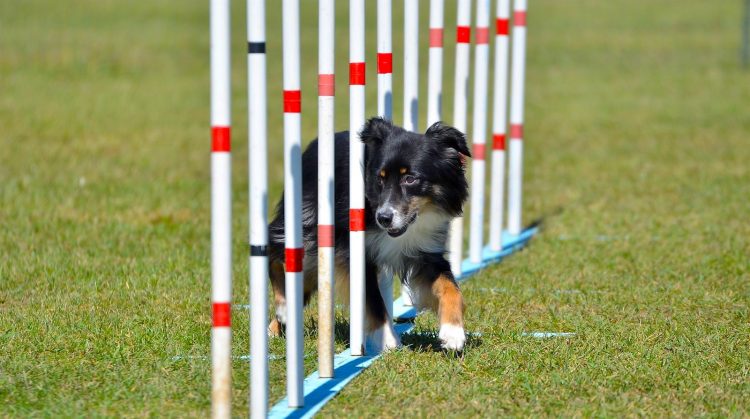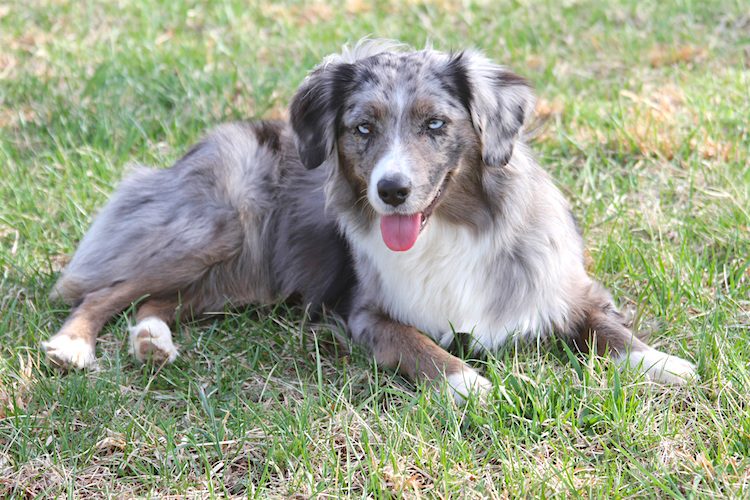
Herding
20–40 lbs.
13–18 in.
13–15 years
1. Key Characteristics of Miniature American Shepherds
Miniature American Shepherds are small, eye-catching herding dogs.
They have almond-shaped eyes in a variety of colors, and one eye may be a different color from the other. Their tails are either naturally short or docked, and they have high-set triangular ears that hang over toward the front.
The Miniature American Shepherd’s medium-length double coat is weather resistant and can be black, blue merle, red or red merle.
These dogs may also have white markings or tan points on the coat, so having more than one color is not uncommon.
2. Where Miniature American Shepherds Came From
Some small Australian Shepherds in California in the 1960s were bred to keep their size and temperament. They were originally called Mini Aussies and are sometimes still referred to by that name today.
The Miniature American Shepherd Club of the USA, Inc. was formed in 1990.
The American Kennel Club (AKC) added Miniature American Shepherds to its Foundation Stock Service in 2011, and in 2015 the breed was moved to the Herding Group.

3. How Friendly Are Miniature American Shepherds?
Miniature American Shepherds are protective, loyal, intelligent and versatile. They are comfortable on a farm herding livestock or in the city as a companion pet.
Because of their intelligence, they are easy to train.
Jaci Harbin says her tricolor Miniature American Shepherd, Rio, “was potty trained in days, and as we went through the obedience courses with her, it was obvious that it was going to take a lot more than learning to heel or do tricks to stump her.”
Miniature American Shepherds can be wary of strangers, so training and socialization is recommended. Because of their instincts, they may try to herd other animals and young children.
Activities that combine mental and physical stimulation and exercise would be best for this smart, agile breed.
4. Is This the Right Dog for You?
Exercise Needs
HIGH: As active herding dogs, Miniature American Shepherds need multiple daily walks or a jog to expel energy. Keep your dog on a leash or within a secure area for exercise.
Play that adds mental stimulation, such as games or agility, is recommended — herding dogs are used to having a job to do and enjoy working.
Grooming Needs
LOW: An occasional brushing during the week is all that’s needed to prevent matting of your Miniature American Shepherd’s coat.
Bathe your dog as needed. Their nails grow quickly, so trim them often. For working dogs, check for debris and insects when they return indoors to prevent infections.
Health Problems
LOW: There are just a few common health problems with Miniature American Shepherds:
- MDR1 mutation
- Progressive retinal atrophy (and other hereditary eye defects)
- Hip dysplasia
- Degenerative myelopathy (spinal cord disease)
Watch this smart Mini American Shepherd puppy do some tricks:

5. Where to Adopt a Miniature American Shepherd
These dogs are hard to find!
When we last checked, we could not find any available Miniature American Shepherds on major adoption websites such as Petfinder. Try out our free adoption search now to see if one of these dogs is available in your area.
Another option: The breed club has a page that lists breeders. Please keep in mind that these are paid listings, and no guarantees of health or quality are offered.
If you contact a breeder, meet the puppy and the parents. Ask for health clearances on the eyes and hips, and inquire about any puppy in the breeder’s care who might have had a spinal cord disease. Responsible breeders should have these tests performed on existing adults and new puppies by a certain age.








